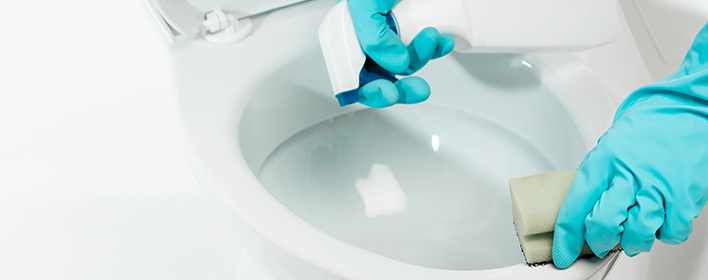
Does Your Bathroom Harbor Germs and Bacteria
The fact is, the bathroom harbors germs, and they are everywhere. Not only in the bathroom but everywhere throughout the house, there are germs. I mean our bodies carry germs and I think I’m a pretty clean person but germs cannot be avoided, no matter how hard we try and most household germs are fairly harmless.
Most of us clean the bathroom weekly, maybe even more often than that, which helps tremendously when it comes to germs and bacteria, but if you don’t and many people; family and friends, are using the bathroom the chances increase for germs and bacteria to spread.
But changing some habits and doing the cleaning, can help make your bathroom about as sterile as an operating room.
Here are 10 tips to stop germs in the bathroom:
-Color code hand and bath towels.
“This way everyone has their one color so family members don’t swap towels and viruses, ” says Neil Schachter, “If people are burrowing their faces in towels, they are doing more than drying off, they are depositing germs.” If you don’t want to color-code, use a waterproof magic marker on white towels, so every family member knows which one is theirs, he suggests.
-Don’t share toothbrushes.
Make sure everyone has their own toothbrush by color-coding them, “Don’t let your toothbrush make contact with any other toothbrushes stored in the same holder either. Germs can be passed along that way,” he says. “A good rule of thumb is to keep them at least an inch apart.” Replace your toothbrush regularly after you’ve had any illness such as a cold or flu because germs can remain even after you’ve recovered. Here’s why: When you brush, you remove plaque and particles so toothbrushes can become contaminated with bacteria, blood, saliva, and oral debris. This contamination can be passed right back to you.
-Always flush with the lid down.
Flushing the toilet with the lid up is not wise. “Polluted water vapor erupts out of the flushing toilet bowl and it can take several hours for these particles to finally settle — not to mention where,”. “If you have your toothbrush too close to the toilet, you are brushing your teeth with what’s in your toilet.”
-Wash your hands after you do your business.
This may be second nature by now, but you should always wash your hands after visiting the toilet or changing a diaper. You should also wash your hands after you come in contact with blood or body fluids, including vomit, nasal secretions, and saliva. And don’t forget: Wash your hands after you clean any area of the bathroom.
-Scrub the inside of the toilet bowl.
“This should be done at least a couple of times a week with products that contain bleach.”
-Scrub showers, bathtubs, and countertops.
These should be cleaned to help reduce the spread of viruses, fungi, and bacteria. “Do it at least twice a week with a disinfectant that contains bleach”. Here’s what can happen if you don’t: “Germs can line the walls (of the tub) and you can easily touch the surface and then touch your mouth”. What’s more, the dead skin cells that sit on inside of the tub can be contaminated. If someone with a cut or open wound goes in the tub, those organisms can infect that wound and increase the overall load of bacteria.”
